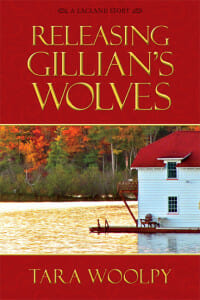by Tara Woolpy
I have a guest post for you today from novelist Tara Woolpy. Tara responded to my invitation to writers to contribute a guest article about their publishing experience. Tara, with both a doctorate in zoology and a degree in literature, brings a unique perspective to a moment all indie authors learn soon enough: waiting for the books to arrive. Here’s her story:
 The advance copies of my first novel are due on my doorstep any minute now. At this point I have no way of knowing whether the reviews will be good or bad or whether I’ll even be reviewed. I also cannot predict how many books I will eventually sell (100’s? 1000’s? 4?). In other words, this is a very hopeful moment and may well mark the peak of my publishing experience. So it seems a good time to share some thoughts about the process of bringing this story to print. Who knows, later it may all be a bitter memory.
The advance copies of my first novel are due on my doorstep any minute now. At this point I have no way of knowing whether the reviews will be good or bad or whether I’ll even be reviewed. I also cannot predict how many books I will eventually sell (100’s? 1000’s? 4?). In other words, this is a very hopeful moment and may well mark the peak of my publishing experience. So it seems a good time to share some thoughts about the process of bringing this story to print. Who knows, later it may all be a bitter memory.
Getting to this point required me to surmount three internal obstacles – ego, fear and ignorance.
- Ego: While we are entering the decade of the indies, there is no question a regular publishing contract with a big company is still considered proof of quality. I come from a long line of self-publishers. My grandfather put out a mediocre children’s book in the sixties and ended up giving them all away. More recently my father wrote a very good history of the struggle to save a locally important landmark and has sold thousands of copies without a website or marketing budget. Still, I resisted publishing my own work because I thought it would somehow mark me as second rate. Reading good books by indie publishers and bad books from mainstream presses has finally convinced me that whether my novel is worth reading has nothing to do with my publisher and everything to do with the story itself.
- Fear: Still, lingering doubts persisted. How could I know my story was good enough? What if it failed completely? Not only would that be embarrassing, it could be financially difficult as well. It helped that the feedback I had received from agents and editors praised my writing style, even while lamenting the market, their work loads and all the other reasons they couldn’t/wouldn’t/shouldn’t take on my book. I have a few writing credentials, a decent short story publication record and friends who like my work. None of that guarantees success. I decided to minimize the impact of failure on my material life by setting aside as my publishing budget a chunk of money that I could afford to lose. Staying within my tiny budget has meant thinking hard about what is worth buying and what I can do myself. Which brings me to…
- Ignorance: It has taken me about a year to learn enough about publishing to put out a book I can be proud of on a budget I can live with. There is so much out there on the internet that it is entirely possible to gather the information you need, but it takes hours and hours of reading and thinking to get there.
Here are the three things I think I did right.
- First, I started my own press. I did this in part to make it look a little less like I was self publishing (protecting my delicate ego) but mostly because I want to treat the whole enterprise as a business. Creating Bats in the Boathouse Press forced me to take the venture seriously.
- Second, I hired professionals for critical tasks. For example, I paid for an editor. Not only am I imperfect and unable to catch all my mistakes, there are certain reviewers who will not review a book unless it has been professionally edited. I contacted a number of editors, gave them all the same few pages for a sample edit and chose the one whose comments fit my sensibilities and whose estimate fit my budget. In the process I learned a lot about editing by noting the differences among editors working through the same text. Also, in the beginning I subscribed to this blog thinking I could design my own cover. Then I read it long enough to doubt that was my best strategy. I tried a few designs before asking a professional to give it a go. She took my best effort and transformed it from an amateurish attempt into something beautiful. Now I’m hoping people really do choose books by their cover.
- Third, I want my book to be taken seriously. That means finding reviewers willing to review independently published books. It has also meant developing a timeline that will put advanced reader copies in my hands at least four months before the scheduled release. Again, I asked for bids from various short run publishers and contracted with the one that best fit my schedule and budget. I ordered 200 ARCs and have compiled a list of reviewers. Midwest Book Review is a great source for reviewer suggestions. I am also recruiting reviews from the book blogging community. Many of them hang out at Book Blogs. And some of those copies will go to family and friends with a slip inside suggesting they post their thoughts about the book on Goodreads, Shelfari and Amazon.
In the end success is always a combination of luck and skill. I cannot know now whether my venture will be successful, but I do know that I will have done all I could to make my best book and give it the launch it deserves. Wish me luck.
 Tara Woolpy‘s debut novel, Releasing Gillian’s Wolves, will appear August, 2011 from Bats in the Boathouse Press. She and her characters regularly blog at https://www.batsintheboathouse.com/lacland-news-blog.html.
Tara Woolpy‘s debut novel, Releasing Gillian’s Wolves, will appear August, 2011 from Bats in the Boathouse Press. She and her characters regularly blog at https://www.batsintheboathouse.com/lacland-news-blog.html.
Photo by Mark Setchell.


